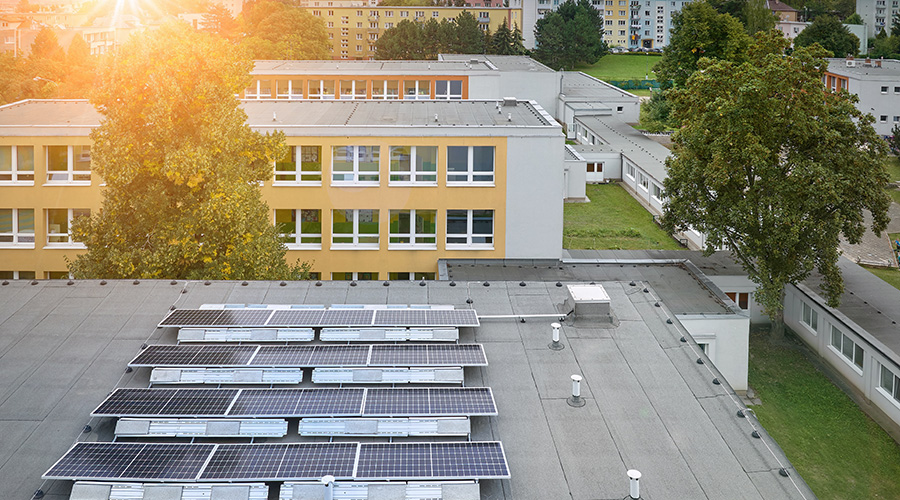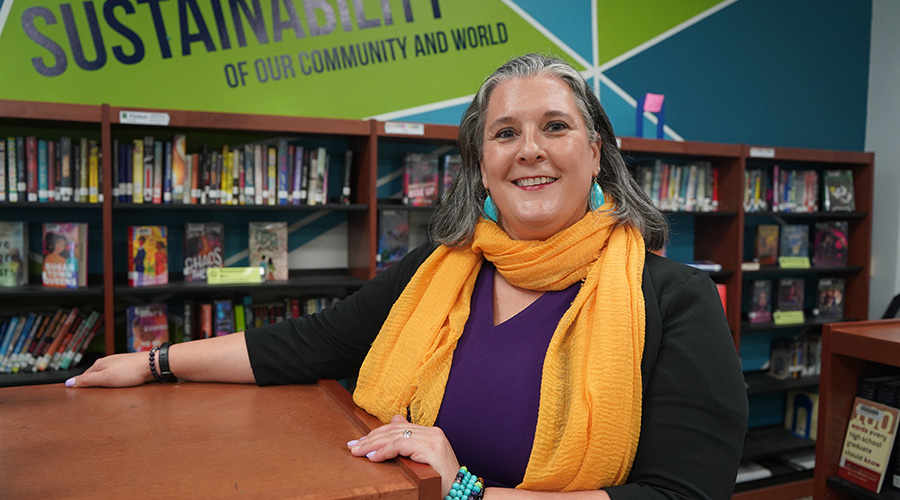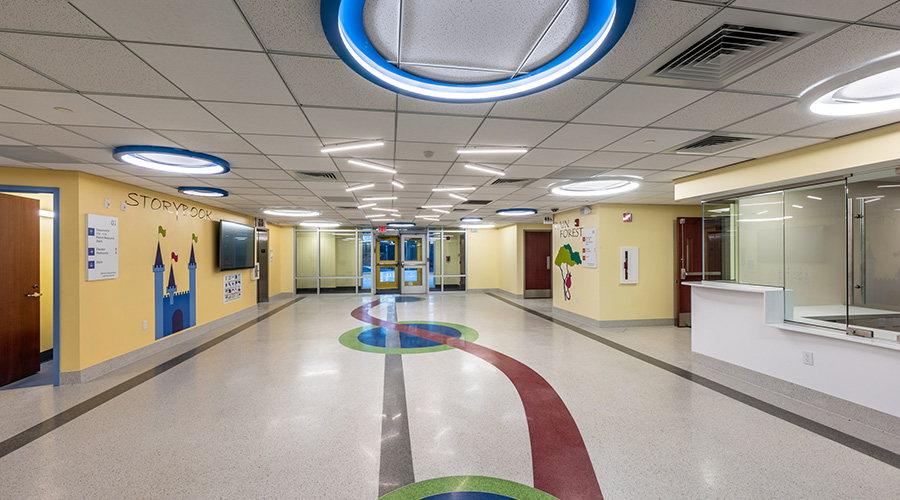More K-12 School Districts Leaning on Solar Energy
Renewable energy source offers schools cost savings, educational opportunities and a clean future.
Solar energy in K-12 school districts is rising in popularity as both awareness and access to affordable renewable energy sources continues to grow. Federal and state funding, as well as a growing awareness of the benefits of clean energy have created more options for facility and sustainability managers, allowing schools to lower their energy bills and meet their own climate goals.
“The role of the building operations staff is to think about how to operate the buildings more efficiently and cost effectively so the budget from the schools is going toward their mission of educating students,” says Tish Tablan, senior program director, Generation 180, a clean energy nonprofit organization. “I think there's just increased awareness that this is something they can do to lower operations costs.”
Cumulative solar capacity at United States schools has more than quadrupled from 422 megawatts (MW) to 1,814 MW over the last 10 years, according to a study on solar in U.S. K-12 schools by Generation 180. The Brighter Future report, which has tracked the nation’s progress toward 100 percent clean energy in schools since 2014, also found that the number of solar-powered schools more than doubled in that time from 3,727 to 8,971, and the average system size installed grew by 50 percent.
Today, more than 1 in 9 students in the U.S. attend a K-12 school powered by solar energy. As the perception around clean energy grows, the expectation is that this number will as well.
“The Inflation Reduction Act (IRA) and Bipartisan Infrastructure Law have created a new system that makes it even more affordable for schools or other tax-exempt entities to be able to afford these technologies,” says Tablan. “I think there's a combination of growing awareness and more options for how to make these projects happen and how to fund them.”
Funding solar projects
There are five commonly used clean energy technologies: solar photovoltaic, energy storage, ground source heat pumps, electric vehicles and vehicle charging infrastructure. Together, these technologies provide many benefits.
“Starting with solar energy, you have the ability to essentially offset your entire electric bill,” says Tablan. “Energy is the second highest expense for schools and by powering their buildings with solar energy, they can take all of the money that they were investing in utility bills and transfer it back and reinvest it into education and student learning. If the mission of schools is to educate students, they want as many dollars as they can going to student learning, not utility bills.”
The good news is that offsetting those costs through renewable energy has never been easier. Not only has the installation price of solar energy projects sharply declined by 40 percent over the last decade, but government and public interest in clean energy has dramatically increased. New federal programs that offer funding opportunities and financial incentives are bringing down the cost, allowing schools to consider solar with no upfront capital costs.
“Upfront costs for public entities, particularly K-12 schools, is a challenge,” says Tablan. “Having options to help fund that, so it's not coming out of their own limited capital budget, is really key for helping them access these kinds of technologies.”
Because of the challenges around direct ownership, which requires schools to take on the responsibility for long-term maintenance and repairs, third-party ownership is the primary funding model for most K-12 schools. According to the Generation 180 report, 80 percent of the cumulative solar capacity installed at K-12 schools is funded by third-party ownership models. Options like power purchase agreements (PPA), leases and energy service agreements reduce the strain on school finances and maintenance staff. Plus, if done right, third-party agreements should lead to immediate cost savings.
“It's a model that is popular because it helps schools avoid upfront cost,” says Tablan. “In this model, instead of the school purchasing and owning the solar array themselves and calculating an ROI … they work with a solar partner, and that solar partner or developer, will purchase the solar arrays, install them, manage the operations and maintenance or any repairs. It takes all of the risk and the burden off of their shoulders.”
State and federal policies and funding play a crucial role in solar energy access schools have. PPAs are currently only allowed in 29 states, but together these states have nearly 11 times more solar capacity at K-12 schools than states that prohibit PPAs or have unclear policies, the Generation 180 report found. States that allow PPAs make up 92 percent of the cumulative solar capacity at all K-12 schools, while the remaining 21 states only contribute 8 percent.
The IRA allows K-12 schools and other tax-exempt entities to receive cash reimbursements for clean energy projects through Elective Pay (also known as Direct Pay). Before this policy, schools could not directly receive tax credits because they do not have tax liability. Now, schools can receive direct payments from the Internal Revenue Service as cash reimbursements for purchases of clean energy technologies.
Unlike grant programs, the tax credits are non-competitive, and there is no cap on the amount that can be received through Elective Pay. There are several clean energy tax credits that are applicable to K-12 schools, allowing them to receive a payment ranging up to 70 percent of the cost to purchase and install a solar energy system and up to 50 percent of project costs for battery storage or ground-source heat pumps.
In addition to enabling schools to take advantage of tax credits, the IRA expanded the Investment Tax Credit (ITC), which offers a potential refund of up to 70 percent of the eligible project costs for solar energy systems by combining base credits and bonus credits.
“What I have found is that the federal government has played a large role in clean energy,” says LeeAnn Kittle, director of sustainability, Denver Public Schools. “We've gained enough momentum in the private sector and government sectors or local government sector that that I think it's here to stay. We recognize that this is a very feasible way to move away from fossil fuel.”
Amy Wunderlin is a freelancer writer based in Fort Aktinson, Wisconsin.
Related Topics:













